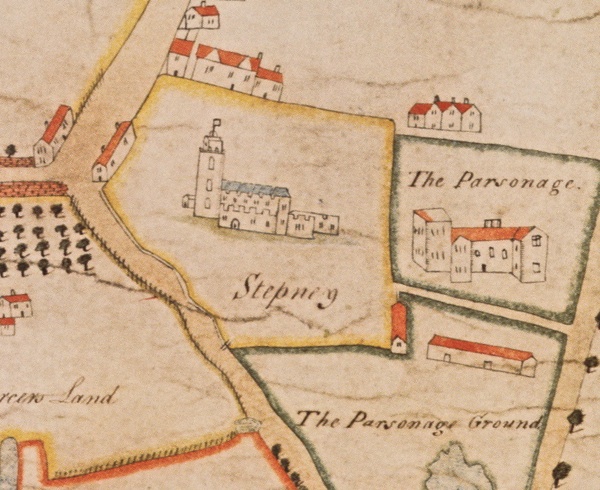On Saturday we were in London, visiting our daughter whose flat is on the borders of Aldgate and Whitechapel. We’d booked a table for lunch at a pub in Wapping, and our route there found us crossing Cable Street, then taking a shortcut through Wellclose Square and Swedenborg Gardens to The Highway (formerly Ratcliffe Highway) and then past Tobacco Dock and Shadwell Basin towards Wapping.
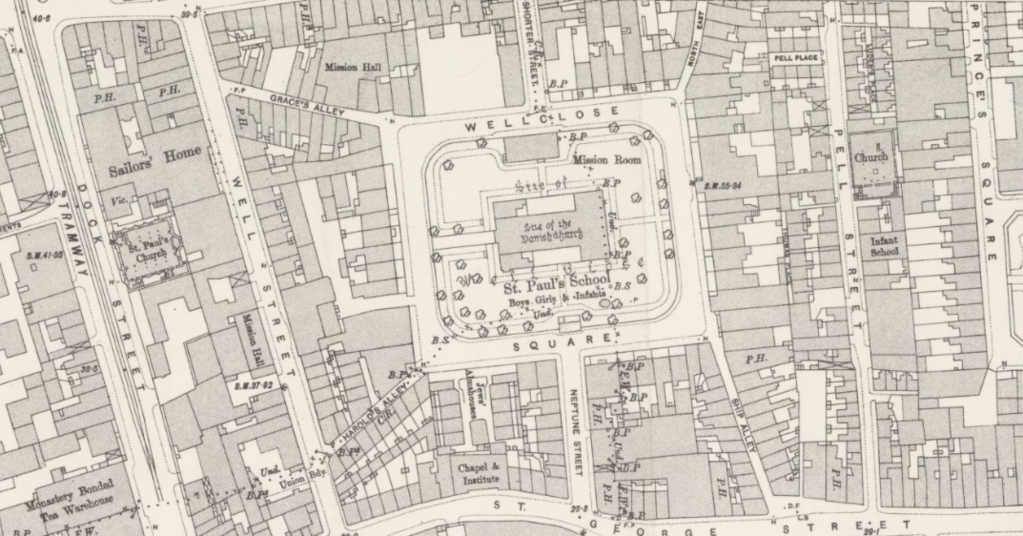
The area around Wellclose Square in 1851 (via (via https://maps.nls.uk/)
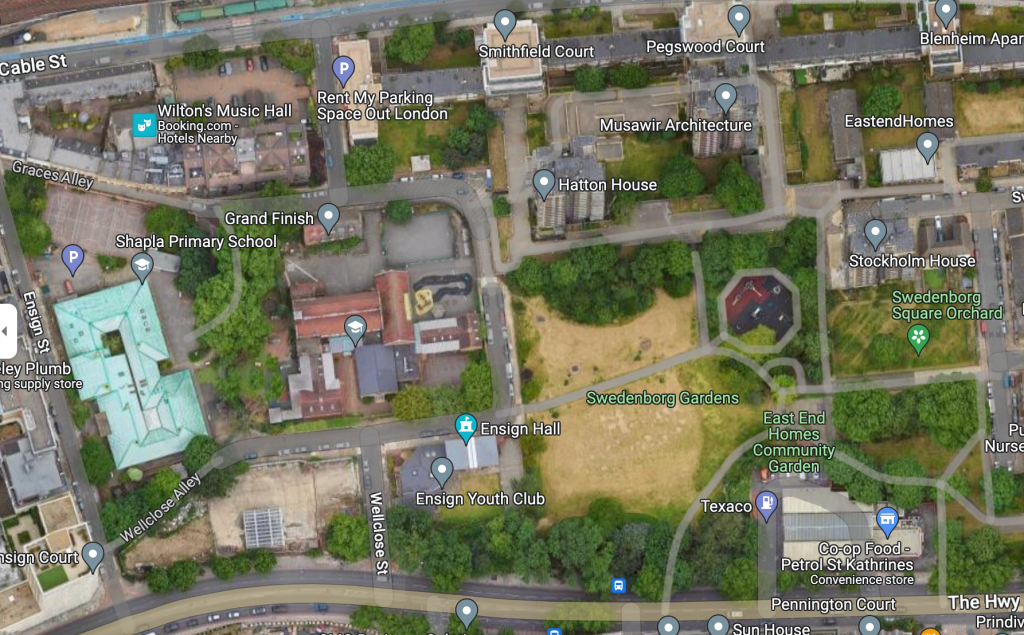
The same area today (via google.com/maps)
I’ve written before about the connections between my paternal great grandfather, Charles Edward Robb (1851 – 1934), and this area of London, in particular about his job as housekeeper at the Wesleyan Mission when it was based at what is now, once again, Wilton’s Music Hall, on the edge of Wellclose Square. The music hall itself, and a few church and school buildings in the middle of the square, are all that remain of what was once a built-up, heavily populated and historically important area, much of which was destroyed by a combination of Second World War bombing and 1960s slum clearance.
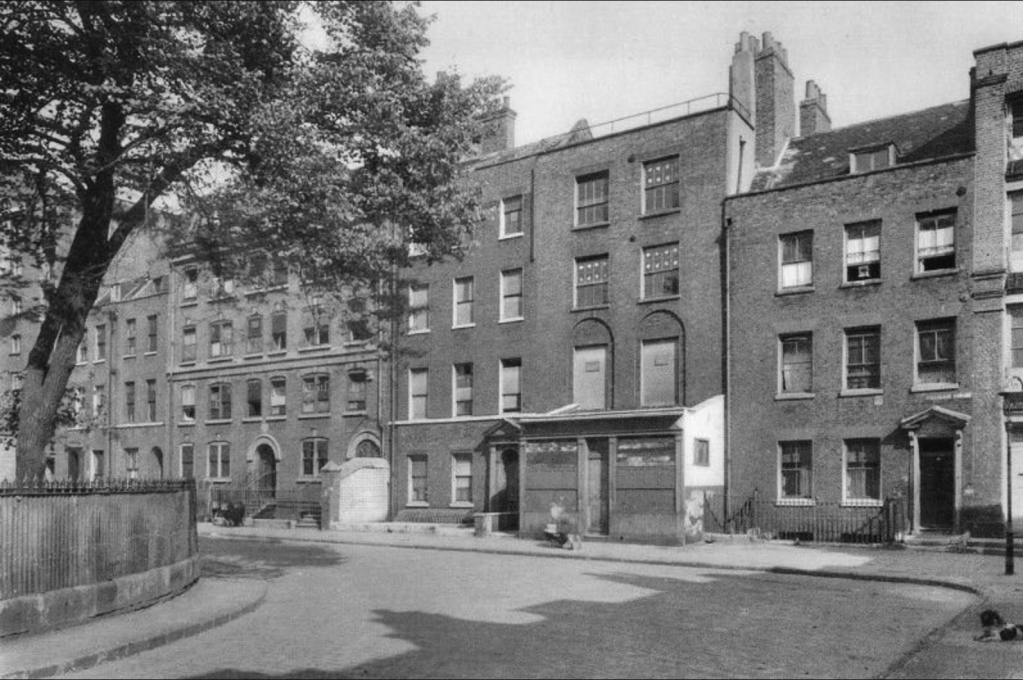
Wellclose Square in the 1940s (via http://www.stgitehistory.org.uk)
Even more devastated by these activities, and particularly by the latter, is the area to the east of Wellclose Square, which is now covered by the green open space known as Swedenborg Gardens. The booklet about the gardens produced by a local charity, which incidentally shows just how many intact buildings were needlessly pulled down in the Sixties, to be replaced in the main by characterless blocks of flats, makes much of the historical associations with the Swedenborgian sect (whose most famous adherent was the poet William Blake) and the Swedish community whose church stood in the now demolished Princes Square.
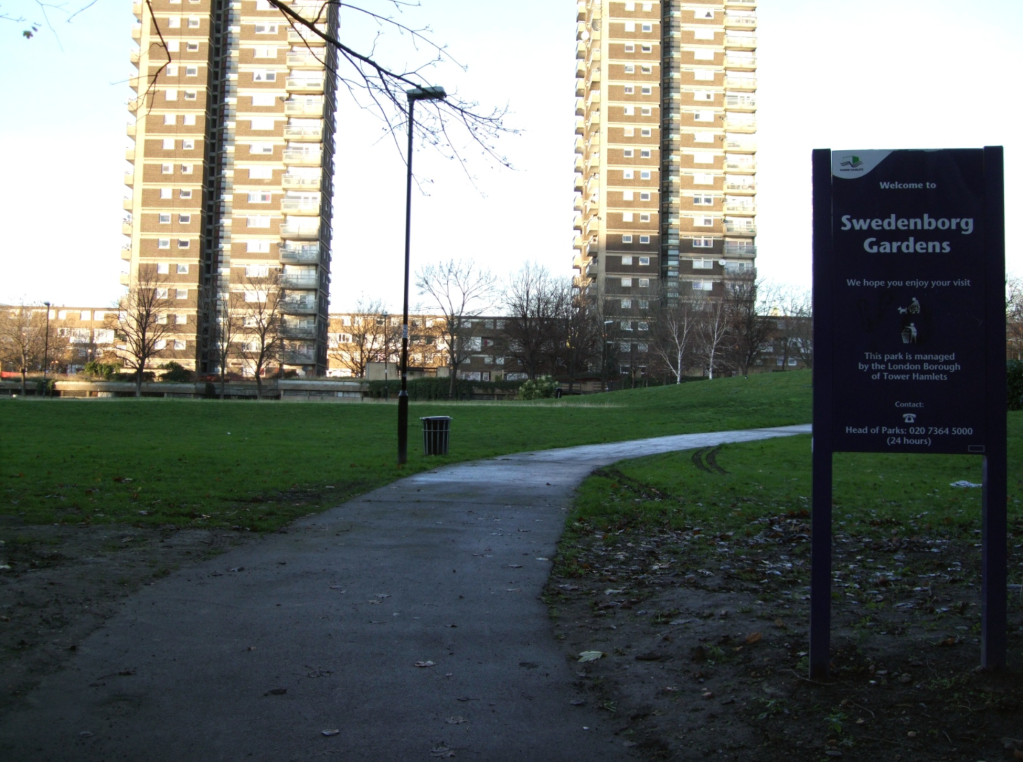
Swedenborg Gardens (via https://www.goparks.london/)
However, what I hadn’t realised until yesterday was that the gardens also cover the area once occupied by Pell Street, which ran from north to south between Cable Street and Ratcliffe Highway: the street where Charles Robb and his family lived in the late 19th century and where my grandfather, Arthur Robb, was born in 1897.
My great grandfather Charles Robb had been born in Soho in 1851, the son of law stationer’s clerk William Robb and his first wife Fanny Seager, who had died soon after giving birth. Three years later William married his second wife, Marianne Mansfield Palmer, and shortly afterwards the family moved to St Ann’s Road in Stepney.
In 1877, when Charles was twenty-six years old, he married twenty-one-year-old Louisa Bowman at St Luke’s church, Victoria Docks. Louisa was the daughter of umbrella maker John Bowman and his wife Elizabeth Jane Larke. As a child, John Bowman had lived with his parents in Harrow Alley, off Aldgate High Street. At the time of his marriage to Elizabeth in 1851, he gave his address as nearby Somerset Court, the location of which I discovered on another recent visit to see our daughter.
However, by the time their first child was born two years later, in 1853, Robert and Elizabeth Bowman were living at 15 Pell Street, with Elizabeth’s mother Mary Larke, a confectioner: they may even have been living above her shop. Mary and her late husband Charles, described variously in the records as a labourer and a clerk, were originally from Somerset. Their daughter Elizabeth was born in Wapping, probably at the address in Neptune Street where the surviving members of the Larke family would be living at the time of the 1841 census, following Charles Larke’s early death. Neptune Street was a short street running south from Wellclose Square to Ratcliffe Highway: the present-day Wellclose Street appears to occupy the same location.
It was at 15 Pell Street that my great grandmother, Louisa Bowman, was born in 1856, the second of eight children born to her parents Robert and Elizabeth Bowman. By the time she married Charles Robb in 1877, the Bowman family had been living for a number of years in another house – No.29 – in the same street. However, my great grandparents Charles and Louise Robb appear to have begun their married life some miles to the east in Canning Town, where Charles seems to have worked as a clerk at the docks, and where the first four of their ten children were born.
But by the time that their daughter Marion was born in 1889, Charles and Louisa Robb were back in Pell Street. It seems likely that the move was prompted by Charles’ appointment as housekeeper at the Wesleyan Mission, which would be how his occupation was described in the 1891 census (though, curiously, the word ‘preach’ has also been added to the record by another hand). The Robbs were now living at 33 Pell Street, two doors away from Louisa’s parents at No.29. Charles and Louisa’s four remaining children would also be born in Pell Street, including their youngest child, my grandfather Arthur Ernest, in 1897. I’ve found an admission record for Arthur at a school in nearby Betts Street, a portion of which still survives, leading out of the eastern end of Swedenborg Gardens onto The Highway.
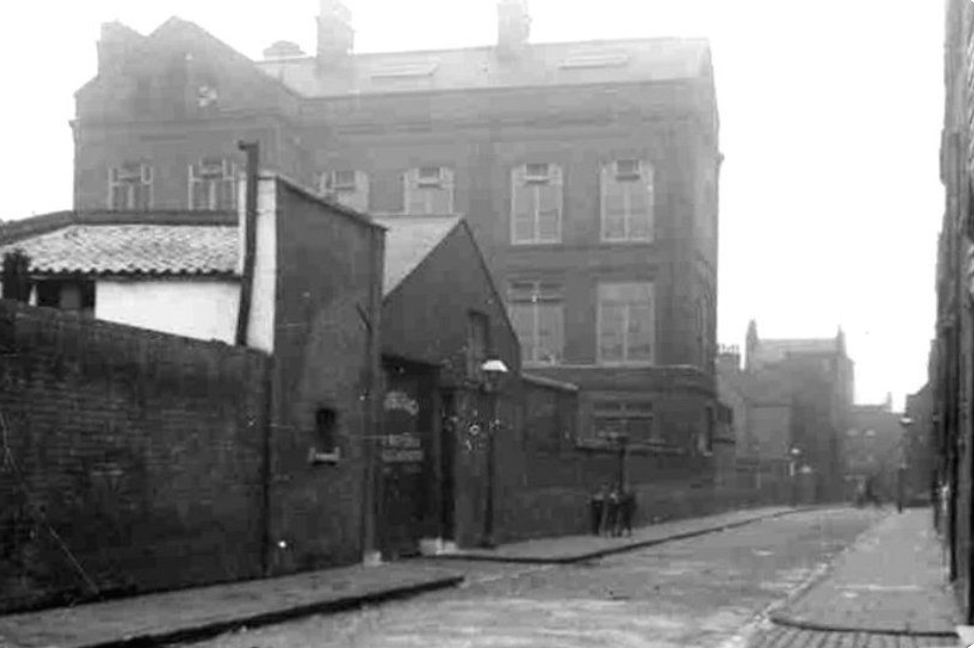
Betts Street School, Whitechapel (via https://www.stgeorgeintheeast.org/)
By the time of the 1901 census the Robb family had moved again, this time to Kensington Avenue in East Ham, the fast-growing suburb on the eastern fringes of London, where my grandfather would spend most of his childhood, and where both of my parents, and indeed I myself would be born.
It’s sad that so much of this part of the old East End has been eradicated and that so little is now recognisable. So many tangible connections with history have been lost in the process, never to be recovered. I’d urge anyone with an interest in exploring that history to visit the excellent website of St George in the East church, as well as the superb Spitalfields Life site.
